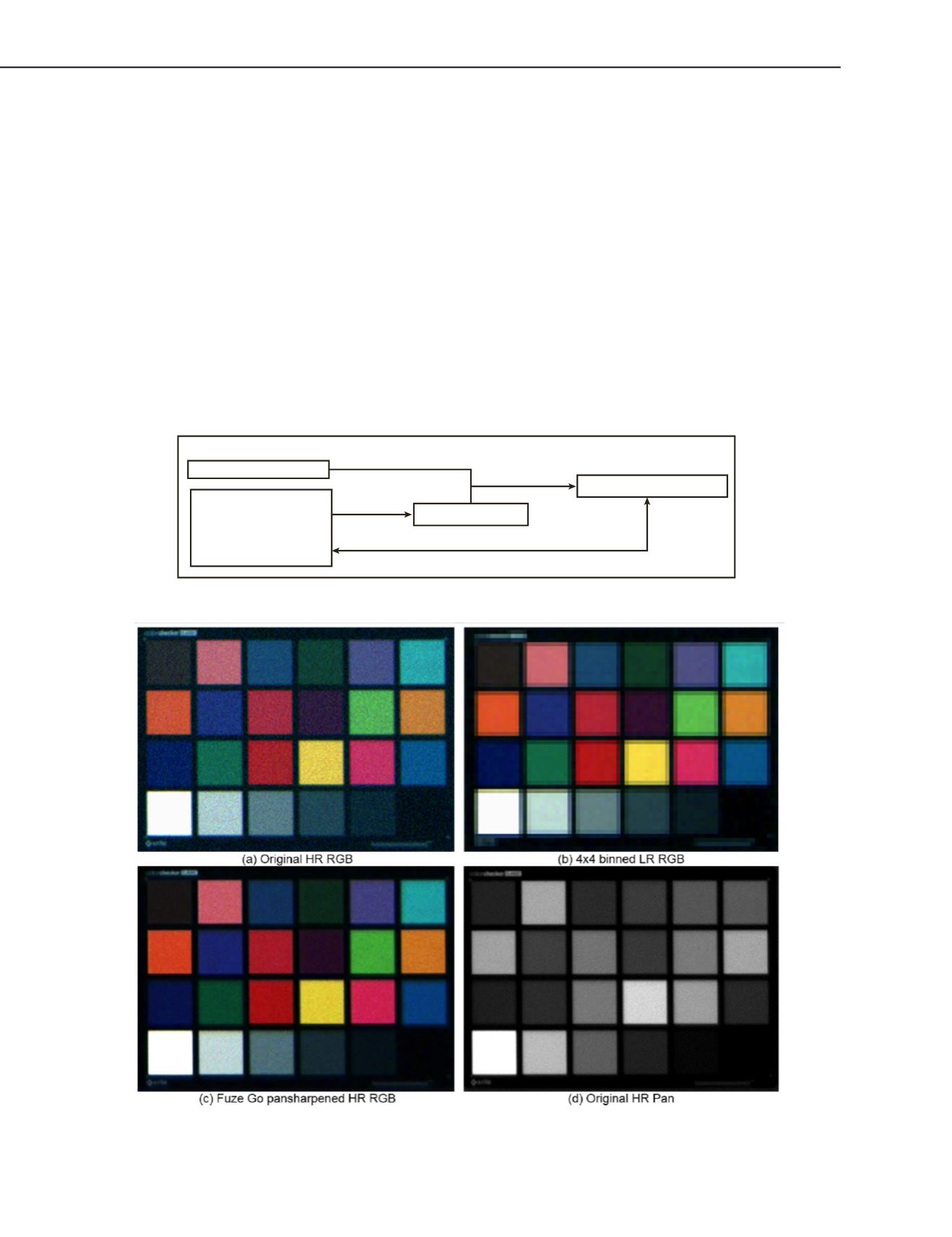
PHOTOGRAMMETRIC ENGINEERING & REMOTE SENSING
October 2016
749
By grouping several neighbouring pixels into one larger
pixel, pixel binning is a common procedure in imaging
industry to increase the SNR or image quality (Yoo et
al., 2015). For images taken under a strong illumina-
tion condition, like daylight, a 4×4 pixel binning of a
high resolution MS image can reach the SNR quality
of a low resolution MS image that would have been di-
rectly collected by a low resolution MS sensor with 4×4
times larger pixels. Because the sensor signal under a
strong illumination is much greater than the sensor
noise (i.e., the combination of the sensor’s dark noise
and readout noise), the influence of sensor noise can be
ignored, so that the SNR is a function of photon noise
(also called shot noise or Poisson noise) (Photometrics,
2010; Fellers and Davidson, 2015).
P
ansharpening
The Fuze Go software tool was used for pansharpening.
The original algorithm was developed at the Universi-
ty of New Brunswick (named UNB Pansharp) (Zhang,
2004). It is used by DigitalGlobe as the standard fusion
tool to pansharpen its satellite images.
Figure 3 depicts the pansharpening process used in this
study. The low resolution MS image was generated from
the high resolution MS image by applying a 4×4 pixel
binning, as is standardized in the imaging industry. It
was then fused with the high resolution Pan image to
produce a pansharpened high resolution MS image. The
4×4 pixel binning was performed to avoid spectral vari-
ation caused by differences between the high resolution
MS sensor and a low resolution MS sensor.
Collected image bands:
(1) High Resolution Pan
(2) High Resolution Blue
(3) High Resolution Green
(4) High Resolution Red
(5) High Resolution NIR
4x4 binning
[1]
[2]
[3]
Pan-Sharpening
(using Fuze Go)
Low Resolution MS
Fused High Resolution MS
Quality Comparison
Qualitative & Quantitative
Figure 3. Flowchart of pansharpening and quality comparison procedure in this study.
Figure 4. Quality (SNR, color, and detail) comparison between the original high resolution (HR) MS image (a), the corre-
sponding low resolution (LR) MS (b), the pansharpened HR MS image (c), and the original HR Pan image (d). (The origi-
nal Pan and MS images were collected under 18 lux and 100 ms.)


